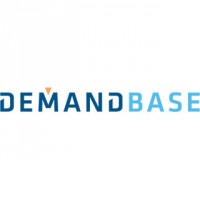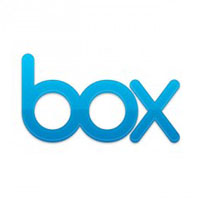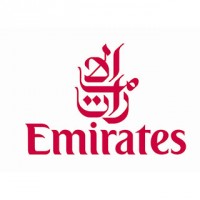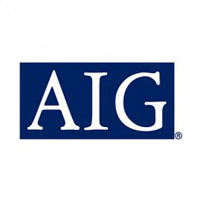Posted by arthurlaw on February 28, 2014
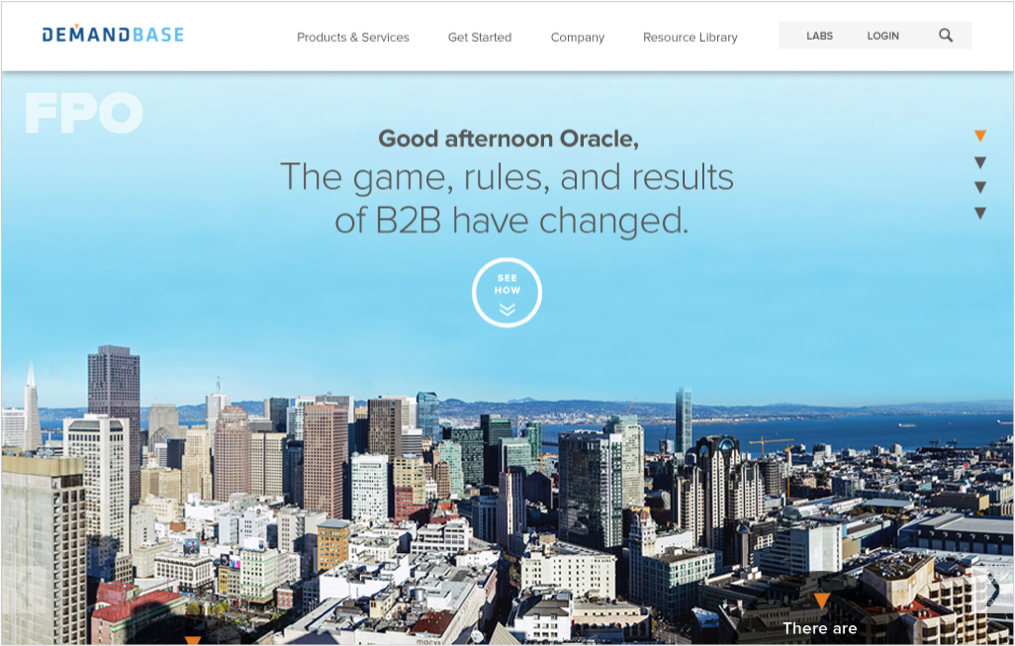
Project:
Demandbase initiated this project as a web redesign and after the requirements gathering phase we recommended restructuring the entire architecture of the site.
New sections of the site included Products & Services as a list what can be bought from Demandbase and Get Started for new customers or IT managers.
Key Challenges:
- Create a site with a customization engine that changes content based on the incoming user
- Design interactive content panels that make technical data more accessible
Role:
As UX lead, I defined how the customization engine would serve specific content to the user. I also managed one copywriter in creating succinct product messaging.
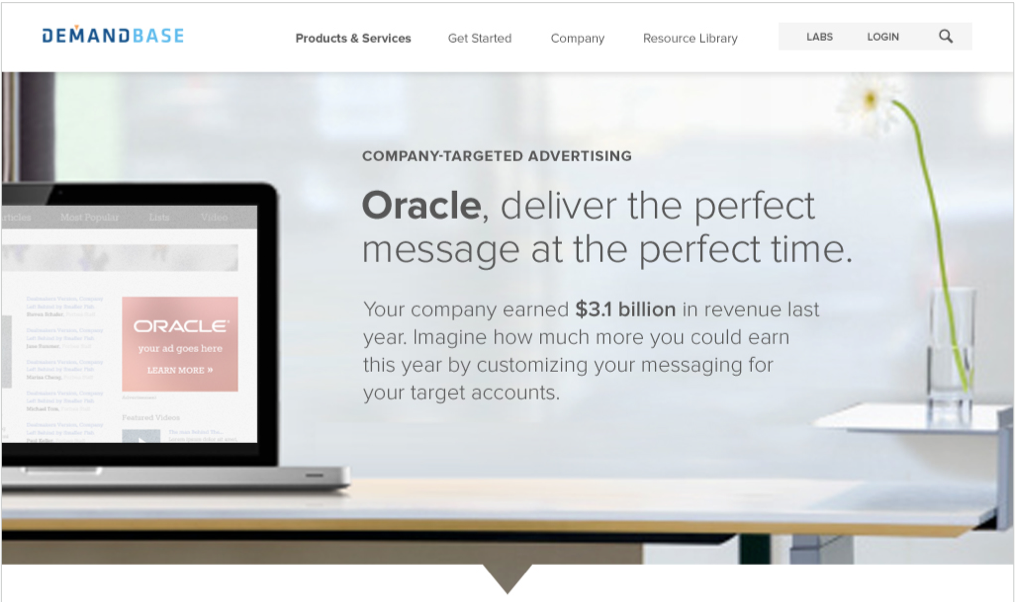
The Demandbase platform has a customization product that allows the CMS to display customized copy on web pages based on what company is visiting the website. Knowing the incoming company and 41 other attributes allows specific messaging which was defined and documented for every page.
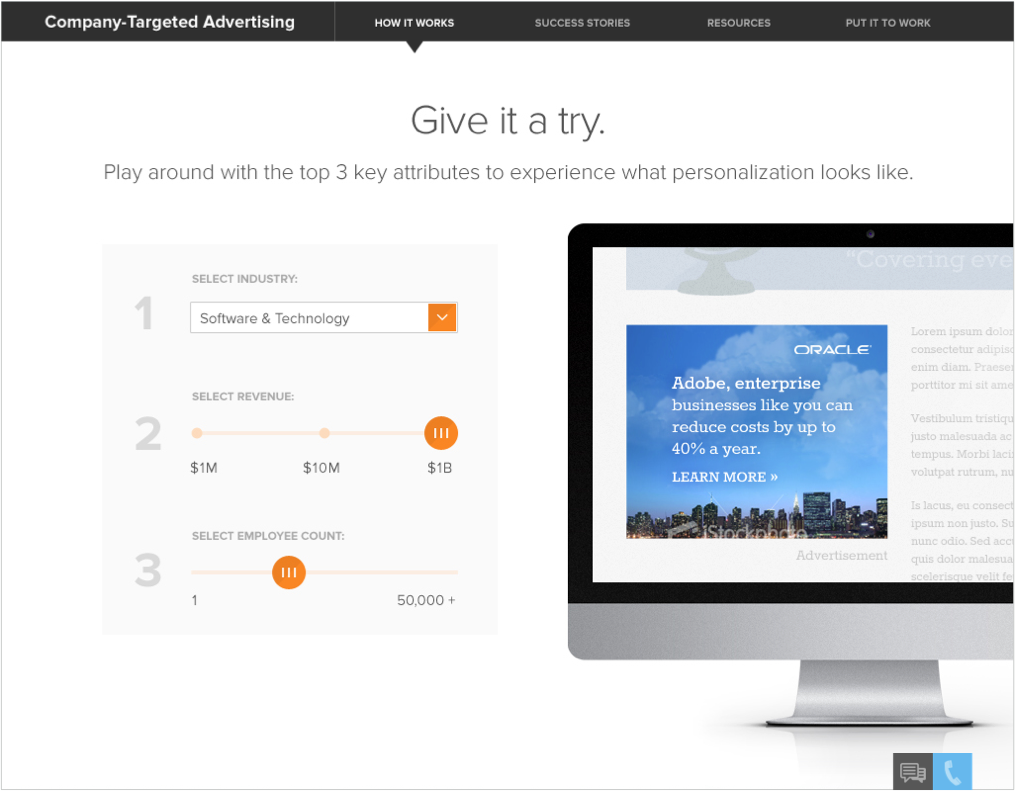
Various interactive panels were created to show the customizability of the Demandbase products. Changing the industry, revenue, and employee count would modify the advertisement on the right.
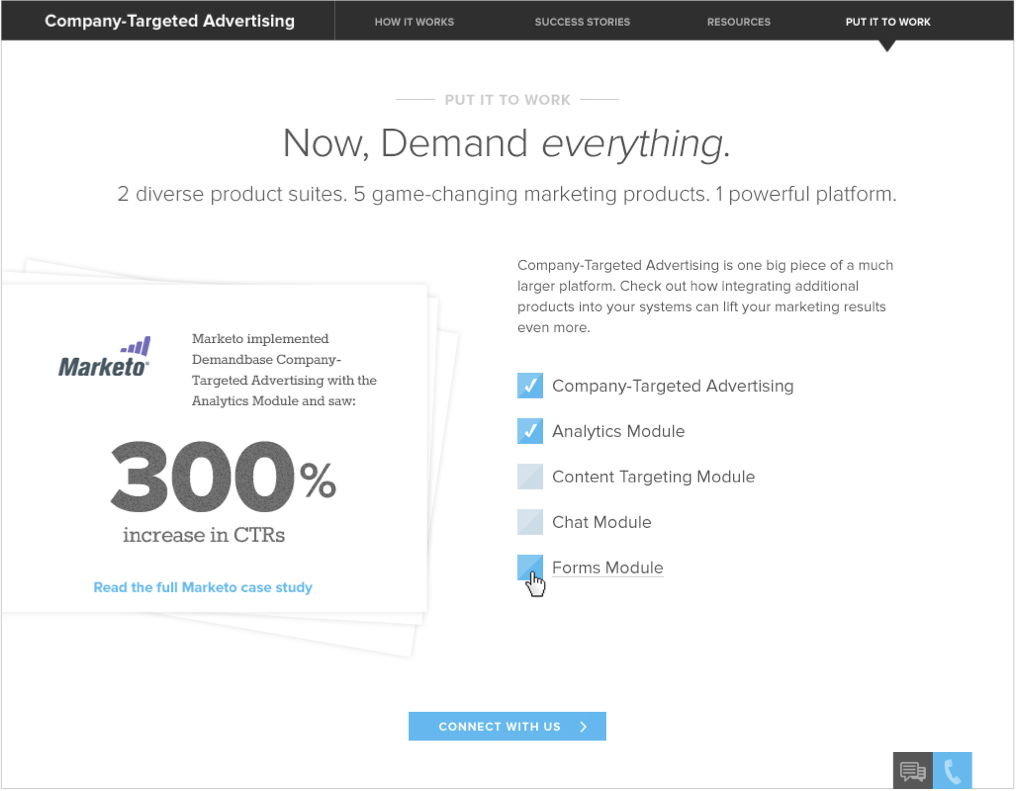
Cross selling modules were added to the bottom of every product page to show case studies of companies that were using multiple products and the advantages they gained by using more than one Demandbase product together.
Posted by arthurlaw on February 26, 2014
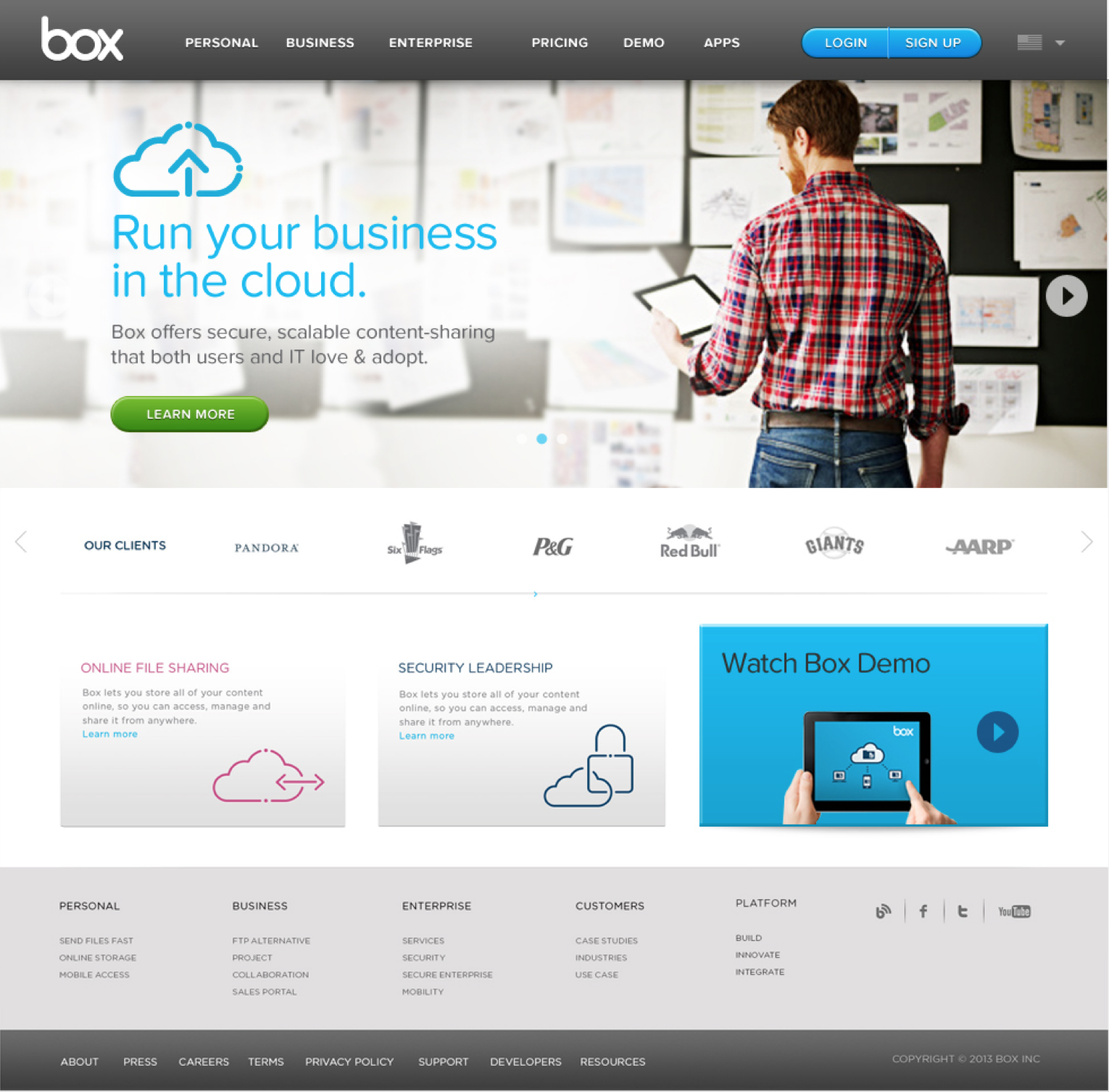
Project:
Succinct messaging and streamlining of content were primary drivers of the Box.com redesign. This project took a 2000 page site and redesigned that content in 200 pages. Individual features that had their own page were consolidated into broader solutions pages and industry specific content.
Key Challenges:
- Create a responsive site across mobile, tablet, and desktop
- Define succinct messaging and content that customers can easily read & scan
Role:
My primary role on this project set the content & site structure and facilitate those changes with the client marketing team. I managed one UX designer in wireframing the site as well as guiding the client’s visual design team in responsive page layout.
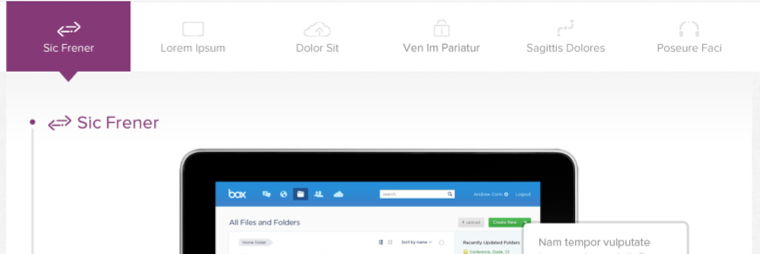
A page level navigation was introduced to let users quickly identify the content on long vertical pages and jump down to relevant content. The bar would lock to the top of the page giving the users easy access to jump around and to know how much content was remaining.
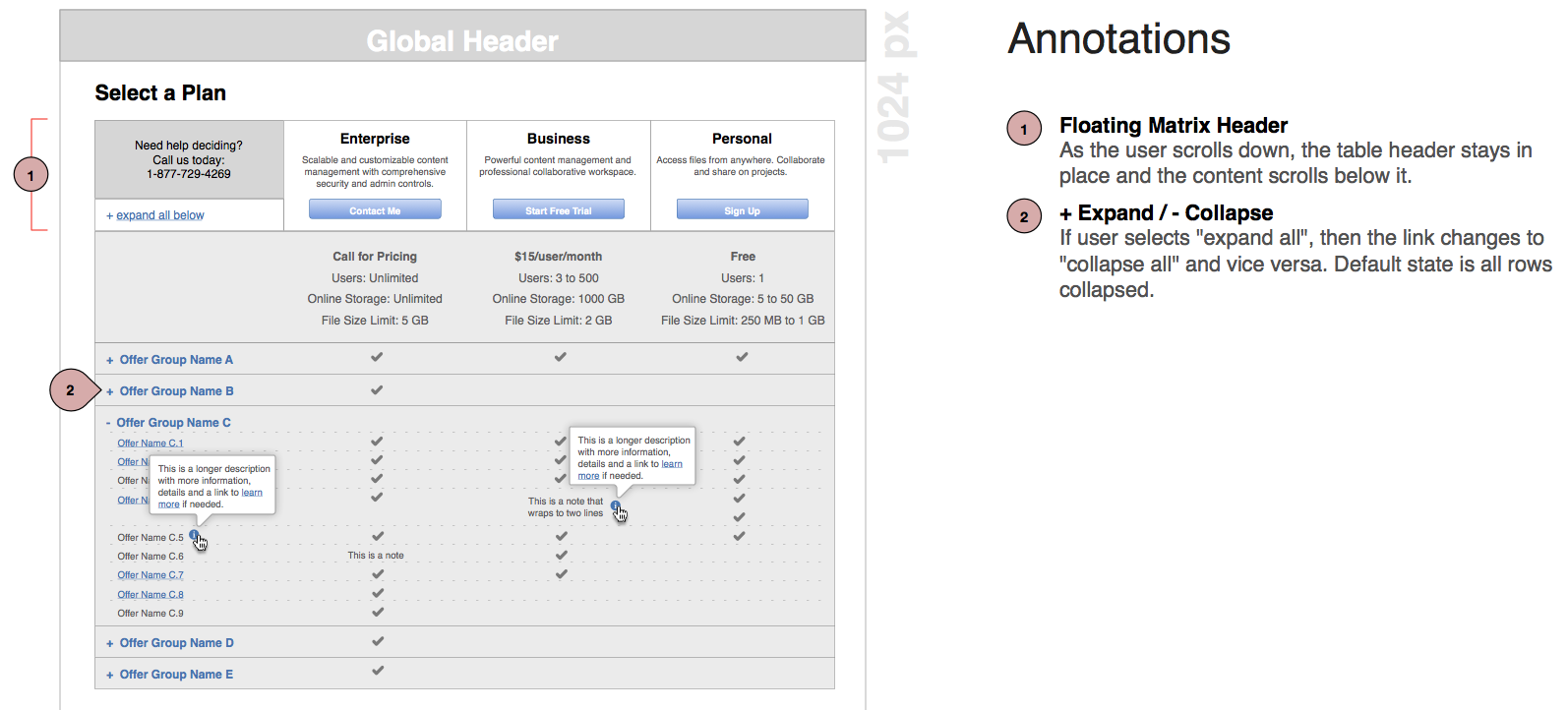
The responsive web design process used 3 different resolutions defined by using looking at the current web statistics and the devices hitting the site today as well as the popularity of various mobile devices. The design templates placed the 3 resolutions on the same page so all 3 resolutions would be considered concurrently.
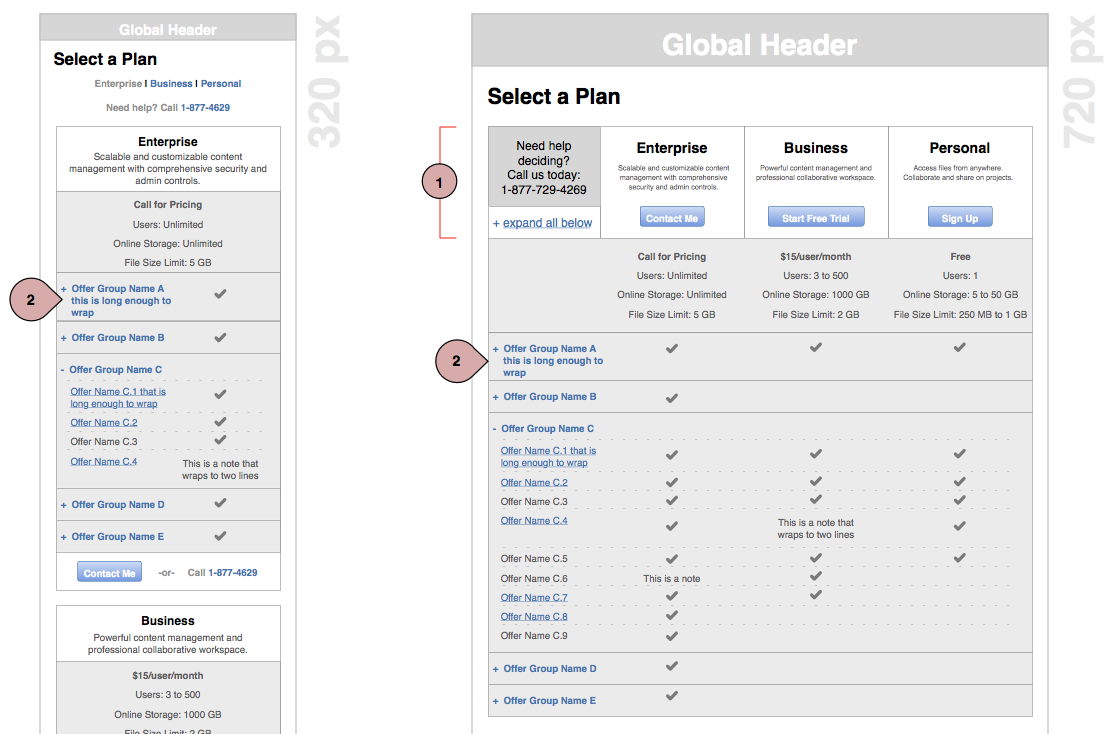
Posted by arthurlaw on February 21, 2014
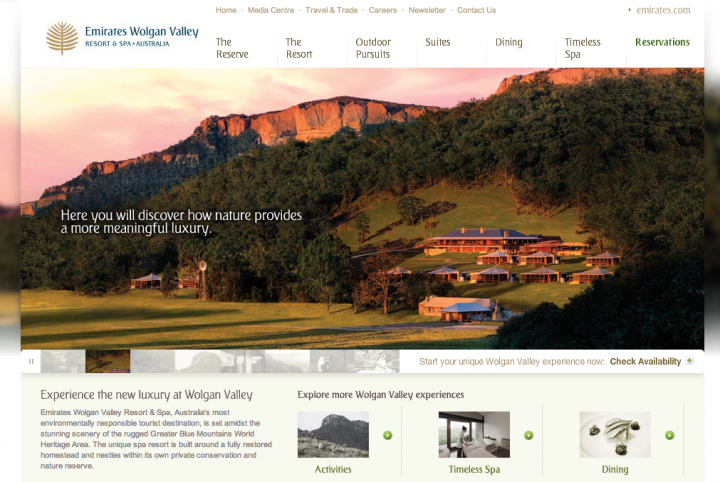
Project:
The web project was required to create an online experience that demonstrates the uber premium service that consumers can expect from Emirates.
The online marketing platform needed to support multiple luxury hotels and resorts with their own uniqueness and personality as well as a centralized internet booking engine that allowed pre-stay customization.
Key Challenges:
- Create one system that accommodates multiple luxury hotels without being clones
- Design a booking engine to do multi-room, multi-stay reservations
Role:
My role on the UX team was to define the architecture of this system and wireframe the booking flow. I also traveled to Dubai for 5 months to conduct contextual inquiries on how customers go through reservation and booking in the U.A.E.
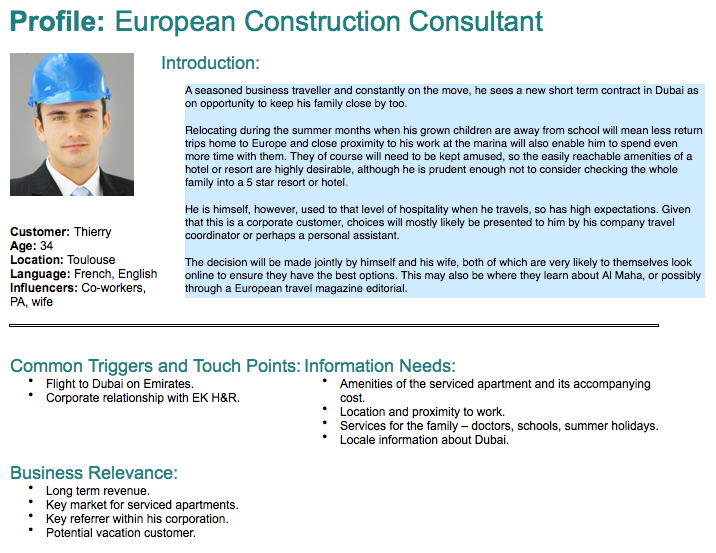
User profiles were generated from market research and sales data to classify different types of guests that would be using the website to book their hotel and resorts stays. The European business traveler was ranked as the number one target and families stopping over in Dubai on their way onwards were second.
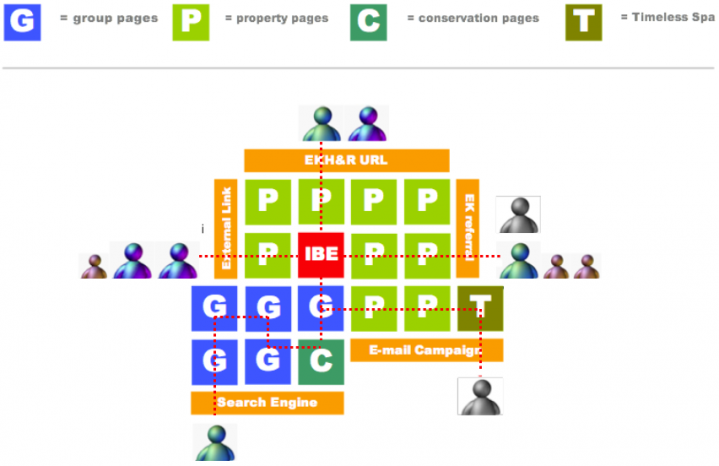
User flows were used to illustrate how various user groups would enter the marketing platform. This could be an existing Emirates customer that receives a marketing email to drive to a customized landing page or a personal assistant that gets to the Emirates Hotels group website via search engine. All paths would lead to the Internet Booking Engine at the heart of the hotels & resort websites.
Posted by arthurlaw on February 18, 2014
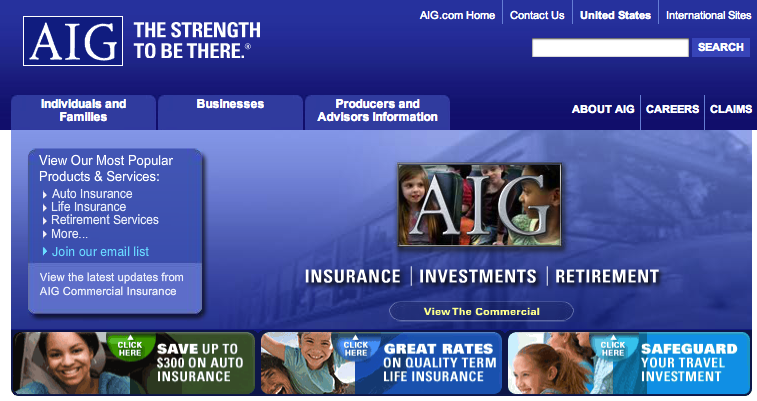
Project:
AIG.com was a full site redesign that unified AIG and its subsidiaries into one web presence. A global requirements gathering process was done to interview marketing chiefs in Europe, Asia, and North America to cover the breadth of products that AIG provided in over 100 countries.
Key Challenges:
- Create a scaleable architecture that accommodates hundreds of sub-brands
- Drive agreement between regional marketing heads across 3 continents
Role:
My role on the team was to audit the existing content structure, define the new structure with global site map and define the content migration process. I was also responsible for designing the product marketing section.
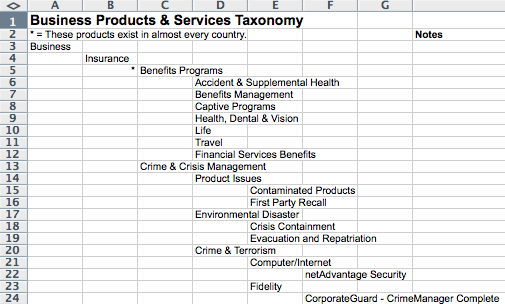
This spreadsheet was one among many that not only tracked every category of insurance product, but was used to unify a common way to consolidate products with the global stakeholders.
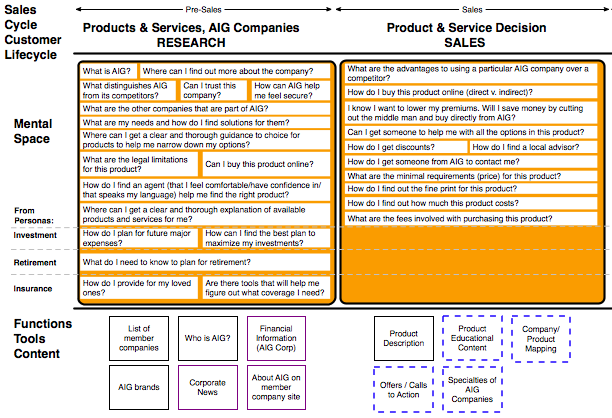
Mental model exercises were conducted with the client to account for some of the top questions each of the target audiences may have when coming to the AIG.com website. This led to deriving all the content and functionality that would belong on the new website.
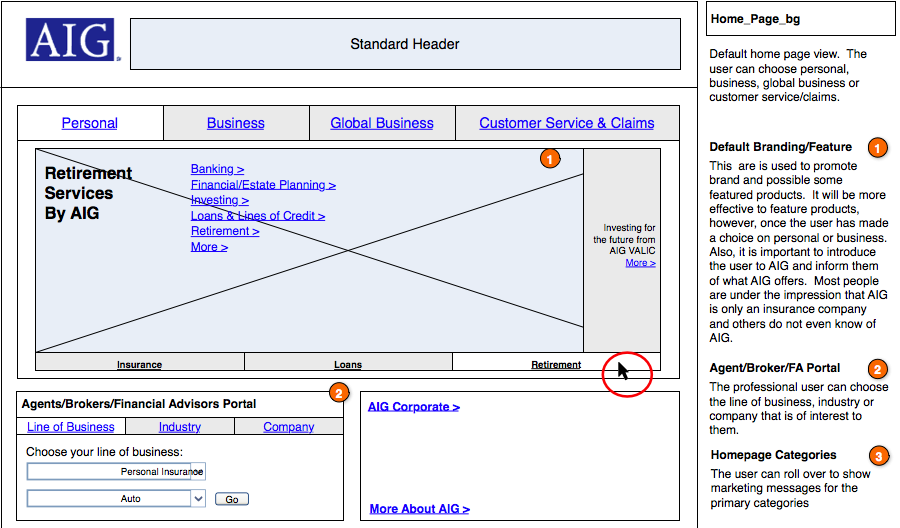
This lead to a wireframing process that led to dozens of templates and modules with hundreds of states to account for the broad product portfolio ranging from auto insurance to airplane leasing.



